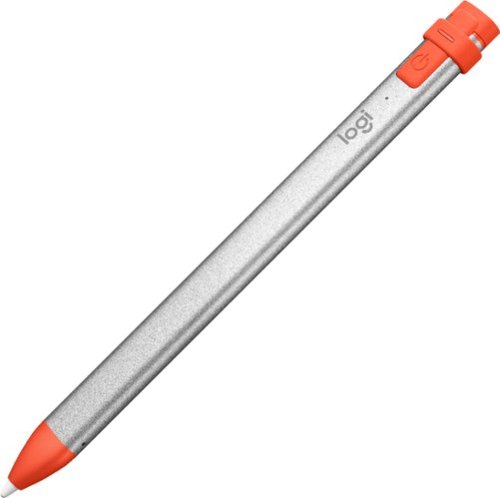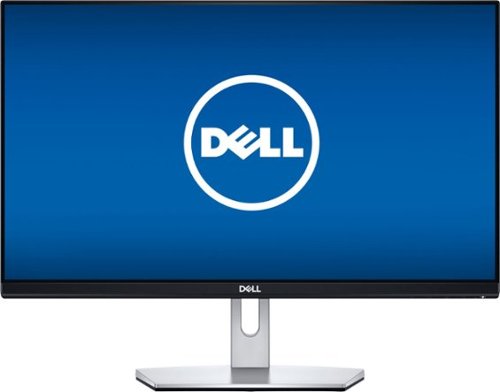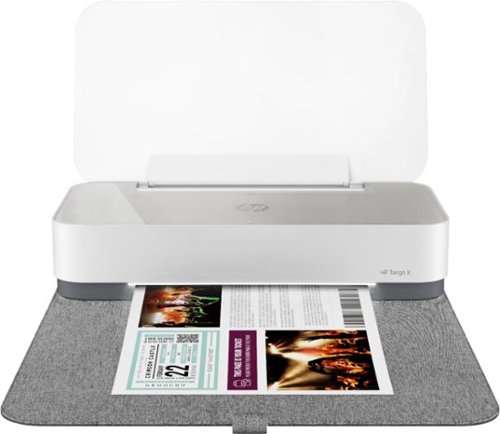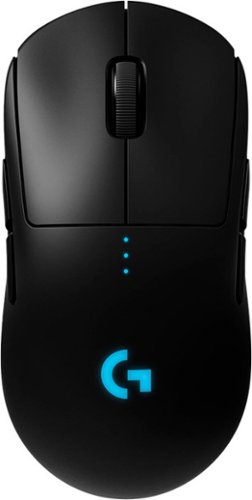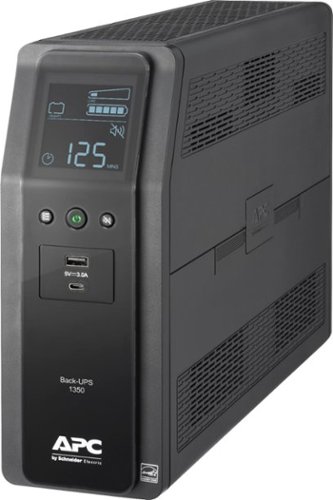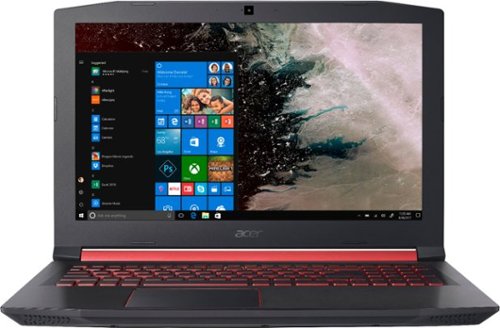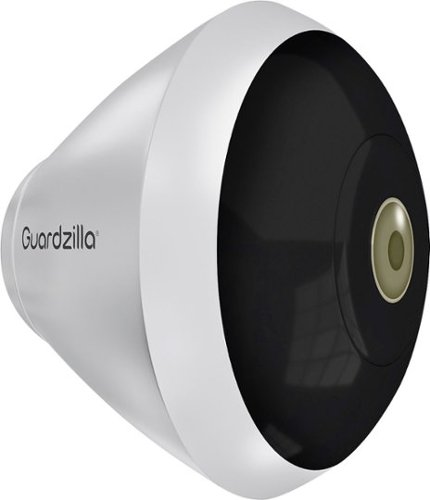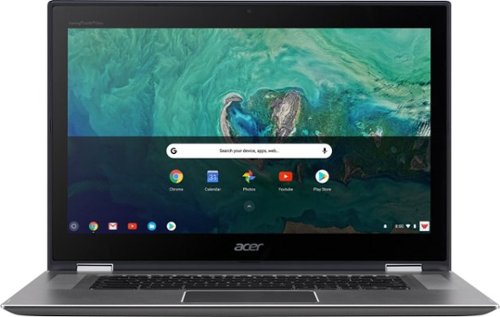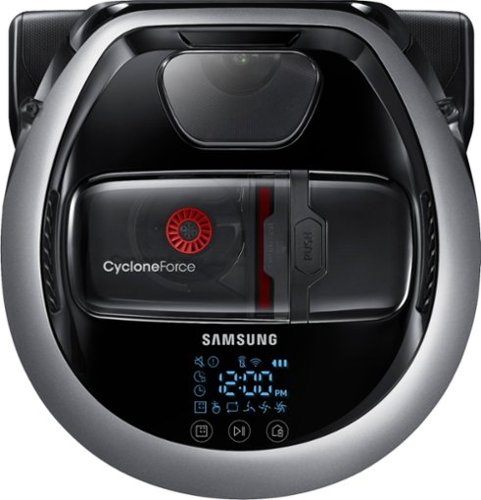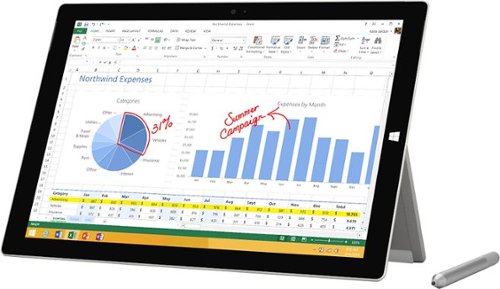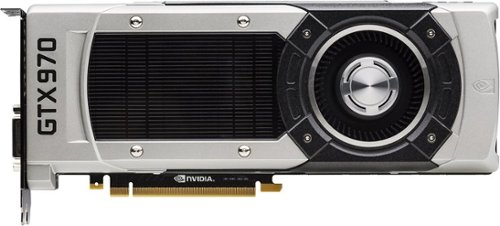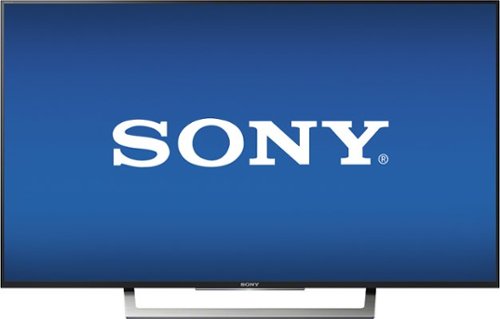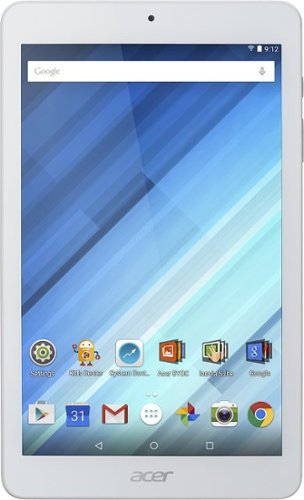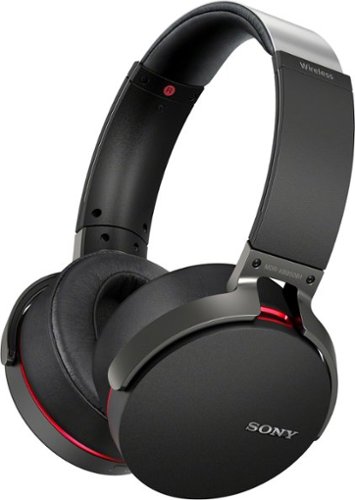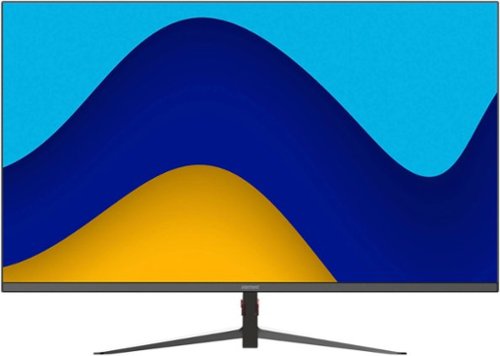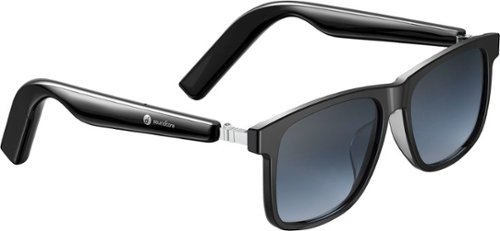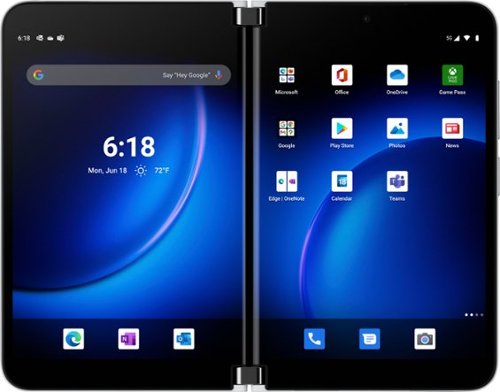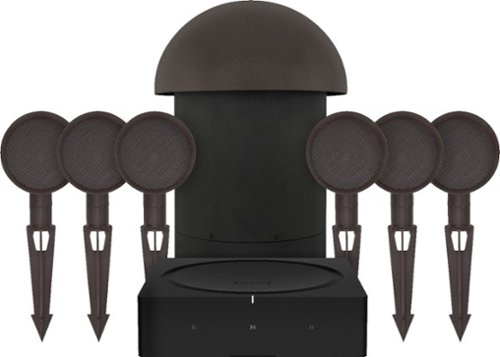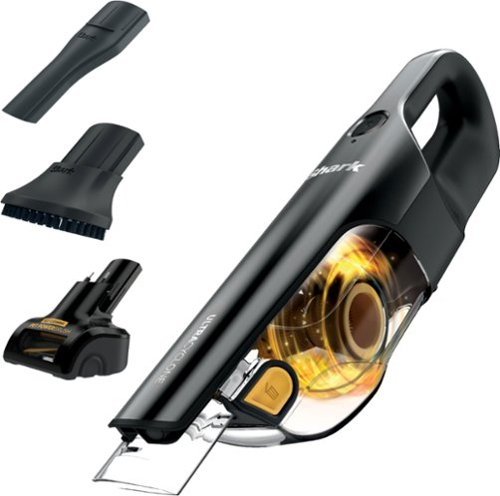aarondr's stats
- Review count185
- Helpfulness votes1,204
- First reviewOctober 22, 2014
- Last reviewMay 22, 2024
- Featured reviews0
- Average rating4.6
- Review comment count6
- Helpfulness votes10
- First review commentJuly 8, 2014
- Last review commentMarch 30, 2017
- Featured review comments0
Questions
- Question count0
- Helpfulness votes0
- First questionNone
- Last questionNone
- Featured questions0
- Answer count16
- Helpfulness votes31
- First answerJuly 8, 2014
- Last answerDecember 11, 2021
- Featured answers0
- Best answers4
Grab a Crayon and make your mark! Logitech Crayon is a pixel-precise digital pencil for all iPads (2018 releases and later) that helps unleash your creativity and productivity in hundreds of Apple Pencil supported apps. Crayon uses Apple Pencil technology including Scribble for a seamless writing experience that's as natural as pencil and paper. Need a thicker or thinner line? Just tilt. Logitech Crayon is built tough with 4 ft drop protection, a unique roll-proof shape, and up to 7.5 hours of active writing time. Palm rejection technology allows you to rest your hand right on the screen while you write.
Customer Rating

5
The pen for the rest of us
on October 28, 2018
Posted by: aarondr
from Richmond, VA
The Logitech Crayon, while designed for the educational market, is really the apple pencil for the rest of us. By that I mean non-creative/drawing uses. Not that the Crayon can’t draw, it certainly can, and features tilt sensitivity, It does lack pressure sensitivity, which would be a deal breaker to any serious artist. If you can get past this limitation, in some ways it’s more Apple than the Pencil.
So what sets the Crayon apart other than its lack of the pressure sensitivity feature? Well for one, the charging cover is attached (hurray!) so you won’t lose it. On that same note, the charger is a female lighting jack, so you aren’t forced to have it sticking out from your iPad in an awkward way (or feel like you'll break your lighting port on your iPad or the Pencil). I can’t imagine being in a scenario where the Pencil’s ability to plug directly into the iPad helps charge it on the go as between battery banks and lighting charging cables it's hard to be without a way to charge. The Crayon’s ability to just use any old lighting power cord is a god-send.
Another great feature of its physical design is the material. Not only does the aluminum feel solid and welcome in your hand, but it also feel super sturdy, unlike the Pencil. I feel like the Pencil could easily be snapped, while the Crayon feels like it could handle some serious mayhem. Furthermore the fact the body isn’t a cylinder, but is more rectangular keeps it from rolling away.
The color scheme might throw some off, but honestly I like the orange combo w/ the aluminum as it helps it stand out just enough without being gaudy. The top cover is a silicon and actually does come off (and is replaceable), but it does take some effort to remove. The tip is also replaceable, and requires a specific tool to remove the tip. This is a nod to its educational roots, where small hands might remove the tip and make it disappear. It actually is preferred in my use case as well, as my children would and have unscrewed my Pencil’s tip before. There is one button on the top that powers the Crayon on, and has an LED that shows the status. Another note: the Crayon auto powers off after 30 minutes. You’re supposed to be able to get 7 hours of usage out of it, and I doubt I’ll push that limit much and it's cinch to charge.
Now how does it write? Quite well. It feels a lot like the Pencil in my ham hands with excellent tracking. Just like the Pencil, it works in the OS natively (swiping on the home screen, through web pages, and notating screen shots). Unfortunately I can confirm that it only works with the iPad 6th gen. My daughter’s 5th gen doesn’t work, and my iPad Pro 10.5” doesn’t work either. However the 6th gen iPad it works right away without any pairing. This is probably where the Crayon is most impressive, as it ‘just works’ as they say (I had a bad Pencil when I first got my Pro and it did not ‘just work’). Tilt sensitivity seems to be on point (pun intended), and allows basic sketches to turn out quite nice when using it for shading. I’m no artist, but I was able to draw relatively well with the Crayon. Unlike some other pens, it doesn’t have a native eraser feature or button, but neither does the Pencil, so no huge loss there.
My primary use case besides just being curious about Logitech’s foray into near first party Apple accessory land is to give my small children a stylus they can really express themselves with. They’re both small, with my son pushing 4 and my daughter just 2. They both need supervision when using the Crayon, but I feel much better about them using this rather than my Pencil. They both enjoy drawing on the iPad - and I enjoy them not using actual crayons on the floor (which they still do, but a father can dream right?). I like that the Crayon just turns on and writes. The strong physically design makes me worry less about my son cracking the Pencil in half and potentially causing an injury. In my testing and writing though, I found myself actually enjoying the feel of the Crayon over the Pencil (it’s a bit more chunky), and wished it worked on the iPad Pro. If the next generation does indeed support this more passive pen, I may just sell my current pro and Pencil and get the Crayon. That said I’m no artistic professional, but I do annotate screenshots, documents, and draw some POCs. In these scenarios, I don’t miss the pressure sensitivity. Tracking was excellent, on par with my experience with the Surface Pen and Pencil on their respective devices. That said, again I’m no artist, but I am sensitive to lag, of which I did not detect. The only thing I found myself wanting was a pen clip, either to somehow secure it to the iPad or another surface.
All in all the Crayon is an excellent stylus for the iPad 6th gen. I wish it worked on more iPad’s, but hopefully future iPad iterations will support it natively just like the 6th gen. I don’t think you can go wrong if you’re in the market for a stylus for the 6th gen iPad, as the Pencil is most likely overkill for you on the iPad (let’s be honest, if you’re buying an iPad for creative work, the Pro is definitely the better fit). Combine with the fact that it's cheaper, it's hard to make a case for the Pencil over the Crayon. This is an excellent product.
Mobile Submission: False
I would recommend this to a friend!
Optimize your viewing experience on this 23-inch Dell LCD monitor. Its Full HD IPS screen lets you see content from almost any angle. Easily connect a laptop or a PC to the VGA and HDMI ports on this Dell LCD monitor.
Customer Rating

4
Great all around budget monitor
on October 21, 2018
Posted by: aarondr
from Richmond, VA
The Dell S2319NX is one of Dell’s newest budget entries in the S-series “Studio” monitors. The hallmark of the studio series are monitors that look nice, offer thin bezels and in general are decent day to day monitors. The S2319NX features a 1080p resolution, 5ms response time, 178 degree viewing angles, and VGA and HDMI inputs. While it carries an MSRP that might seem on the high side, it’s often on sale, while makes it attractive.
First things first, my unit was nearly flawless on arrival. There were no dead or stuck pixels (a big deal w/ budget monitors), and panel uniformity was excellent. The 178 degree viewing angle spec should be a hint to you that we’re dealing with an IPS technology screen (probably AH-IPS, but I can't verify that). For those of you unaware, IPS is in-plane switching, which allows for excellent color reproduction, and great viewing angles. It’s a great tech for general purpose monitors, as the upsides are positive for most office/productivity workloads.
After unboxing and attaching the base to the monitor it’s pretty easy to get setup. The stand is extremely basic, only providing vertical tilt. Unfortunately there isn’t a VESA mount here, so standard mounting is out of the question. Another negative in my book there is a power brick providing power. It’s a 40w (12v 3.33a) brick that comes with a decent length cord, but it’s still an annoyance for me as I prefer just having a standard 3 prong outlet built in (one less thing to lose). I suppose one positive is that a replacement power adapter would be easy to procure.
Once you plug in the monitor, you’ll find your choices of either a VGA or HDMI input. It’s interesting to see a ‘19 model year offer the legacy VGA port (which hasn’t been native on laptops since 2014 nor found on desktops as often as it used to be). I only used the HDMI port, which has the advantages of being digital and carrying audio as well. While you’re exploring the ports you’ll also find an audio input and audio output. This is handy for the aforementioned HDMI input, as you can attach your speakers or headphones to this output to without having to run an audio cable back to your computer. Unfortunately you’ll have to look to the ‘H’ variant to find speakers, as there are no built in speakers here. It’s also handy to have the input to match up w/ the VGA if you do end up using it. There isn’t a separate volume control, but I know I never use a monitor’s volume control anyways.
Once you plug in the monitor, you’ll find your choices of either a VGA or HDMI input. It’s interesting to see a ‘19 model year offer the legacy VGA port (which hasn’t been native on laptops since 2014 nor found on desktops as often as it used to be). I only used the HDMI port, which has the advantages of being digital and carrying audio as well. While you’re exploring the ports you’ll also find an audio input and audio output. This is handy for the aforementioned HDMI input, as you can attach your speakers or headphones to this output to without having to run an audio cable back to your computer. Unfortunately you’ll have to look to the ‘H’ variant to find speakers, as there are no built in speakers here. It’s also handy to have the input to match up w/ the VGA if you do end up using it. There isn’t a separate volume control, but I know I never use a monitor’s volume control anyways.
I had no problems getting it connected. The included HDMI cable made it easy to just plug and play. The monitor menu system will be familiar to anyone who’s used a Dell monitor before. Unlike the upper tier monitors, the menu doesn’t have the niceties such as active power consumption, gamma control or other picture settings. What you find here are brightness, contrast, a set of predefined color profiles, and a smattering of other non-picture related settings. Like many of Dell’s monitors, there is a personalization section so you can setup the non-menu buttons for certain actions, like quick switching color profiles, or inputs. There is a flip between auto source and locking on either VGA or HDMI manually (I appreciate this). One thing I did like, the ability to turn off the power LED when in use (in Other Settings). In case you’ve never owned a Dell product, the service tag is also found in the menus. You can also tell the HDMI input to use audio from the analog input if you wish as well. Unfortunately when it comes to picture you pretty much only have one custom profile, which only allows you to adjust the intensity of the red, green or blue colors. The lack of adjustments make it hard to correct any color imbalance on the display itself.
The good news here is, colors are pretty good. IPS brings pretty decent color accuracy out of the box. In my basic tests, each color channel was fairly smooth transition from bright to dark. Color banding wasn’t apparent in any examples I noticed. At first, I felt as though the colors displayed were washed out. The blacks were essentially a dark gray, and contrast was poor. Then I realized that on my Nvidia test bed, the monitor must have looked like a TV to the drivers, and thus limited RGB settings were applied. Once I switched the drivers to use full RGB instead of the limited gamut, blacks, whites, and colors improved dramatically. I’m no stranger to this problem, as I’ve had monitors like this in the past, but it’s an unfortunate issue that all but the advanced user would miss - providing significantly worse picture quality. It’s compounded further in the monitor’s color settings to allow either RGB or YCbCr inputs (essentially I believe the monitor itself is almost advertising TV style color). It’s possible that Dell assumes the HDMI input will be used for a game console or other living room device that is geared to limited RGB, either way I’d highly suggest setting the monitor to RGB, and ensuring a full RGB color setting is used.
Once the limited RGB was out of the way, things got much better for this display. I recommend leaving the sharpness to 50, as it did some odd things with a cross hatch pattern either going up or down. There is a response time setting, but I highly recommend leaving it on normal even if you are gaming. There is traditional LCD motion blur, but the response time set to fastest only seems to induce overdrive inverse ghosting. I’d rather deal with a bit of a slower response time than have various color artifacts from too much overdrive. Another great thing was lack of any real IPS glow around the edges. Blacks were pretty dark (not as dark as some other panel types, but definitely higher contrast than many IPS panels). There was some off-center viewing glow, but that was less panel and more coating.
The coating applied is definitely glossy, and is fine for most environments. It’s not super shiny, but it also is far from matte. Again, panel uniformity was above par (especially for a thin bezel edge-lit display), with only some color variance when viewed at an angle. I found this affect more pronounced on the vertical axis than the horizontal, which is probably fine considering the stand doesn't rotate.
I used the monitor for both gaming a productivity to test it out. I played several rounds of CS:GO, and while it only offers 60Hz refresh rates, I felt it was more than adequate for non-competitive play. I didn’t notice any ghosting even in faster scenes. RTS or other games only helped this monitor shine further. Productivity wise, the comfort color profile was handy to have, but considering both Windows, Mac, and Chrome OS all offer automatic time of day color profile switching, it seemed moot. All in all, it really is a great looking 23” display during use.
Physically it’s about as small as one can make a 23” panel. It honestly looks like a 20” monitor from the back, but the display itself is definitely 23”. The bezels are smaller than either my U3415w or d2716dg Dell’s, which all offered the best of the best slim bezels of their day. It’s very light, under 10lbs w/ the stand, so it’s easy to move as necessary. It can wiggle a bit if you are a heavy typer, but generally I found it stable enough for normal use. The design is sleek, but also (from experience) a dust magnet. The glossy black frame and backing will show and attract dust quite well (the D2716ds is very similar). This monitor is just a monitor, lacking any USB hubs, or other functionality.
So who is the S2319NX for? If you’re looking for an affordable monitor with an above average picture quality, small footprint, and don’t need speakers, this is a really good fit. The speakers might be a bigger deal for some users, as many PC users don’t want desktop speakers anymore. However a set of headphones might be the perfect pair for some environments. Gamers might want to shoot for higher refresh rates, but both the size and resolution are perfect fits for casual players. Obviously the lack of VESA means in a professional environment, your options are limited for mounting to only the stand and viewing angles are affected by reflections from the coating. You might be thinking by this point the S2319NX is a jack of all trades, master of none, and you’d be right. However that isn’t to say this monitor is mediocre, but rather just less flexible than some. The panel is a decent IPS unit with a good picture only let down if a bad color setting is selected. It’s a testament to the state of budget monitors - that while you can spend a lot more for other features/quality, this unit will take you a long way if you can deal with its quirks.
Mobile Submission: False
I would recommend this to a friend!
Built to match the way you live and designed for use with the HP Smart app, Tango X helps you stay a step ahead by connecting and printing from any device, anywhere.
Customer Rating

4
Good Knick-knack shelf, decent printer.
on October 15, 2018
Posted by: aarondr
from Richmond, VA
I honestly haven’t had an inject in a long time. I went laser back in the mid-2000’s and haven’t looked back. The HP Tango X was an interesting product for several reasons: It was compact, blended in with decor, and offered the ability to print photos on photo paper. With kids around, we’ve been enjoying swapping out photos more now, and not having to run to Walgreens or CVS to pick up photos seemed like a plus.
First of all, let me tell you what this printer isn’t. It isn’t full of features, screens, and buttons. In fact, there is hardly any buttons on it. The only thing you’ll find is a ‘info’ button that is a multi-function button (although on the back you’ll find a power and wireless button). There isn’t even a USB port, just Wi-Fi (dual band even!). This printer has traded a tiny LCD screen for an array of LEDs. These essentially put on a light show while printing, and are ostensibly part of the voice-activated computing movement which tends towards LEDs blinking to send messages to your eyeballs avoiding letters. In fact the HP Tango X is marketed as being voice activated, which is a bit of a misnomer IMHO as there is no microphone or native voice activation. What that means, being translated from the marketing speak, is that it has integration w/ Alexa and Google Home through - of all things SMTP (I.e. email). Yep, you setup the integration by printing an info page which the print uses to share it’s email address, which you input into the app by hand. Yes, you heard that right: Alexa integration via hard copy of an email address. Who says HP’s printer division is stuck in the past?
Ok, fun aside, what is this printer? It is a minimalist, focused, quiet, modern looking printer. Let’s talk about looks. It’s a compact, printer that comes w/ a fabric case. Yep it can double as a knick-knack shelf when not in use. This is a nod to the fact that it’s an occasional use device. Just like elliptical machines should come with extra racks for hanging clothing off of, the Tango X allows you to stack stuff on it safely. The case allows it to blend into a living room environment and is part of HPs new design language that I was first exposed to when reviewing the HP Wave computer. It’s nice and allows you to forget about the technology when not using it.
Setup was relatively easy, you plug it in, put the cartridges in, do a little dance in the app, and ‘wala a calibration page followed by a info page print. Build quality is nice for being so light and the lights and speaker do a good job of providing feedback and feel very ‘Alexa-ish’ if that’s a thing. There is a definite focus on non-textual/screen feedback on the device, and it’s a breath of fresh air. Printers have gotten overly complicated in many ways, and it’s good to see the HP Tango X take it in a different direction for the home user.
Once setup, I had no problems using Alexa to do things like print my shopping list, or print coloring pages for the kiddos. These are real, helpful, and insightful features. How much of this is HP and how much is the ecosystem for Alexa is the question that I haven’t answered. In either case, I’m pleased with the idea/concept. There is a significant delay between the request and print (about 30 seconds) - I’m not sure how much of that is Alexa, SMTP (if that truly is used), or just the printer warming up. All I know is, it annoys my wife (as she’s said, she’s almost moved on completely by the time the printer prints what she requested). Of course you’ll find AirPrint and Cloud Print capabilities here as well.
As far as printing goes: the quality is quite good if not great, the speed is adequate, and the ink is well, ink. It bleeds if exposed to fluids, which are plentiful w/ toddlers. I did find text to be extremely sharp, and high quality. I was initially worried when I saw the calibration sheet, but it must have been printed using the draft quality, as the standard quality is very nice. Photos are good, if not great, but still better than what you’ll get from a color laser. They do have a tendency to be a bit tacky, but such is the world of inkjet. I never found the speed overly problematic, it isn’t as fast as some printers, but if anything I’d say the trade-off is related to quietness of operation. This printer is darn near dead silent. That took me by surprise, as the last inkjet I had was loud, did a 2 minute dance before printing, and printed a sloppy mess. What you get in the Tango X is decades of refinement of the inkjet ‘way’. The engineering shows.
Another place where the engineering shows is the ink cartridges. Not only are they check for authenticity, but they have about 5 drops of ink in them each. Of course I’m being hyperbolic here, but there is about 10-15 photos in here. After printing about 4 photos, 2 coloring sheets and maybe 4-5 black and white text sheets the black ink showed around 80% and the color 50% per color. Again, I’m not super surprised by this, but printers like these almost need subscription plans for ink… oh wait - guess what is hard marketed on the box, the printer, and the app? Ink subscriptions!
Now I have a bit of a bias when it comes to subscription plans for consumables. Inkjets were always known for the high cost per page, and I’d guess the cost per page here is no different. The HP Tango X does offer the ability to print (from your phone only) 10 free photos per month (5x7 maximum). Other than that, you choose your ink plan based on how many pages per month starting around 50. While that is pitiful for an office workload, it might be perfectly fine for a home workload. You get charged overages, with an additional 10 pages costing $1. If you can budget your printing properly this is pretty good - especially considering that replacement cartridges are about $36. This means if you get the $3 a month plan you’d have to only go through 1 set of cartridges a year. So it actually makes sense to a degree as long as you can keep track of your usage. You can scale the printer plan all the way up to 300 pages/mo for $10.
Just in case you see the feature, this is just a printer, not a scanner. You can ‘scan’ from your phone using the app and your phone’s camera. Still is isn’t as quick nor as foolproof as a flatbed or ADF. However for a space conscious occasional user, it probably is perfect.
Which brings me to a pseudo analysis of what this printer is: A ‘post-printer’ printer. Ok, hang with me here, but what we essentially have here is a printer, that masquerades as knick-knack shelf (w/ the case flipped over). It’s competent and quiet, it offers features that it alone cannot deliver but instead assumes a smartphone to augment it. It removes almost all of the traditional printer selling features, and comes with a subscription plan for ink that starts in the tens of pages per month realm. This is a printer that actually does a decent job of blending into a room (think small apartment or flat) and thinks beyond the USB cable (haha WiFi only!). It recognizes that many people print very little, and when they do it’s from their phone on the run (boarding pass, coupon, photo they just took, homework, etc). It’s forward looking at how people will use voice computing to do things like print their shopping list, random coloring sheet etc. The reality is, it’s a printer for people who don’t want a printer (at least not in the traditional sense) but still need to print occasionally. Here it executes well - even if a bit pricey for such a mundane assignment.
Now back to our original use case - occasional printing use of photos of kids. Here it does a pretty good job. My wife was hoping for something a bit smaller, but this printer does a good job at photos. We’re going to finish off the starter cartridges and see how the replacements last once we get them, but this is not a poor man’s game. You can get many more photos w/ better quality from a professional printer at your local drug store. I still espouse lasers for everything but photos, and have a 80lb laser in my home office to prove it. But there is no question that if the traditional home printer is to survive in a digital first world it must adapt, and the Tango X feels quite a bit like that future. Just be ready to subscribe.
Mobile Submission: False
I would recommend this to a friend!
Designed over two years with direct input from many professional esports players, PRO Wireless gaming mouse is built to the exacting standards of some of the world’s top esports professionals. PRO Wireless gaming mouse is built for extreme performance and includes the latest and most advanced technologies available. Featuring LIGHTSPEED technology, PRO Wireless overcomes the limitations of latency, connectivity and power to provides rock-solid and super fast 1 ms report rate connection. PRO Wireless gaming mouse is also equipped with the latest version of the HERO sensor, our next generation optical sensor that is the highest performing and efficient gaming sensor.
Customer Rating

5
Correctly, This is the Best Wireless Mouse Ever
on September 30, 2018
Posted by: aarondr
from Richmond, VA
The Logitech G Pro Wireless Gaming mouse is the newest in a line of pro e-sports accessories from Logitech. Logitech is still one of my favorite peripheral makers, and produces some of the best products. The G Pro Wireless certainly seems no exception here. I previously called the G703 the best wireless mouse ever, but this one topples it easily.
Now, the G Pro isn’t what you would call a featureful mouse. For the high price tag, you get one of the lightest, best feeling, and best tracking mice in the business. There are a total of 8 buttons that can be customized, but the additional 4 side buttons come with covers (both buttons and covers are held on magnetically) that can effectively remove these buttons. There is a DPI adjuster button, but unlike most mice, this button is found on the bottom of the mouse. I generally don’t adjust DPIs in game, but if you use this feature, it might be a make or break for you.
The G Pro is definitely a case of less is more, both feature wise and weight wise. The weight of the mouse is 80 grams - that’s just a shade above the grams of sugar found in a 20oz Mountain Dew. There are few mice that approach this weight, and non that are wireless and wireless charging. Yes, this mouse supports Logitech’s powerplay as well - one of the few features. The bottom of the mouse has a small door that opens up to reveal a storage area for the USB receiver. This is a great feature for traveling.
In the box you’ll find the cord w/ adapter, lightspeed receiver, button covers, and of course the mouse itself. After plugging in the mouse using the cord, I appreciated a return to PVC mouse cords (as braided tend to drag, especially if you have a whole desk mouse pad). The mouse took a couple hours to charge up fully, but once charged, I’ve had really good battery life. There is a huge drop in battery life if you use the lighting feature. Frankly RGB lighting seems a bit silly on a ‘pro’ mouse. Considering the lighting is really only on when you’re activating the mouse and thus covering the lighting it feels like a ‘gamer’ culture feature, not a pro gamer feature. Out of the box, only the logo illuminates, but you can also turn on the DPI lights. I highly recommend not. For some reason, the logo lighting is only about 0.7mA draw at 50% brightness, while the DPI lights draw 1.7mA alone. This drains the battery really fast. That said, battery life is really decent, and much better than the G703 I’ve had before. Partially responsible is the new HERO 16K sensor. This sensor apparently uses a lot less power than the previous PMW3366. Honestly I can’t tell the difference in feel - the PMW3366 has been my mainstay for years now, and the HERO won’t upset.
The Logitech Gaming software is excellent. In fact the power draw ratings and estimates for each part of the mouse are listed which is where I got the 1.7mA draw. Frankly this is the kind of detail you just don’t get from other companies. Logitech has been doing excellent mice, and excellent software for a long time now, and I’m impressed by almost every detail I find. I’ve even recycled an old Android phone as a CPU/GPU/RAM monitor that the software powers.
I’ve previously reviewed the G703 mouse, and if you happen to own that mouse, you’ll instantly notice a lot of similarities and differences. The cord design, and RGB lighting are similar, as well as the vaunted receiver and adapter (both lightspeed wireless). The scroll wheel of the G Pro isn’t illuminated, in fact you can see it’s not solid as well, obviously part of the diet this mouse is on. Of course the G Pro is a completely different layout as well. Where as the G703 is a right hand mouse only, the G Pro is ambidextrous - left handers rejoice! The G Pro also features 4 side buttons, but these can be turned off, and even removed and replaced with button covers effectively removing them from the mouse. If you’re a clutch type user, you’ll appreciate this feature, as I’ve always found the right side buttons of these type mouses to be in the way for my grip.
Feel wise, it is similar to many of the great ambidextrous mice. It doesn’t have that molded to your hand feel that the G703, G502 or other right hand mice have, but it also doesn’t get in the way of your preferred grip. The G Pro Wireless can be effectively palmed, and clutched. It has a low back, so it’s not directly a palm mouse - especially for those with larger hands, but it can be palmed. If you clutch, you almost don’t even notice the weight of the mouse. Heck it’s so light you could almost move it with your mind. In any case, it’s one of the most versatile mice I’ve used. It definitely is a notch above the G703 in movement. The G Pro just glides around with almost no effort.
I finally got around to finishing the Legacy of the Void campaign on Starcraft II and this mouse was my guide. At first the lightweight nature took a minute for me to get used to. But it wasn’t long until I was appreciating this mouse a ton. I finished the entire campaign (but epilogue and prologue) on one battery charge w/ about 20% left in the tank, so it lived up to its promises. Playing some Overwatch really let this mouse shine, as twitch shooters are almost what this mouse was made for. It was at this point I just covered all the side buttons up and had a great experience with my 3 button mouse. It’s easy enough to swap back the buttons, so that’s a great plus day to day if you want to use the side buttons as back and forward browsing. Speaking of buttons, these are amazingly tactile - with action approaching the travel and force of an Apple butterfly switch but with a nice click sound reminiscent of all Logitech mice.
So is the G Pro Wireless a good mouse? Unequivocally yes - not just good, but great. This is probably one of the best mice on the planet right now, and suited for professional gaming use. That said, unless you’re a pro gamer, the price might be a hard pill to swallow. If cost is no object, you can’t get much better than this. For the price I would have liked to see Logitech include a case for travel. If you are a pro gamer, you might appreciate protecting your investment in its own custom case. If you make money gaming then this is definitely the mouse to look at.
Mobile Submission: False
I would recommend this to a friend!
High Performance Computer and Electronics UPS for Premium Power ProtectionThe Back-UPS Pro family offers guaranteed power protection for high performance computer systems, routers/modems, external storage devices, game consoles and other electronics in your home or business. These UPSs supply electronics with abundant battery backup during outages and stabilize unsafe voltage levels. They also provide power protection from damaging surges and spikes, and allow the use of management software so you get the most out of your UPS. Premium features of this family may include Automatic Voltage Regulation (AVR), an LCD display, Smart Outlets, energy saving functions that reduce electricity use, network manageability, Watchdog, or configurable outlets. Together with the rest of the Back-UPS Pro's standard features, they are the perfect choice to protect your data and keep your system available.
Customer Rating

4
Great UPS if a bit noisy
on September 19, 2018
Posted by: aarondr
from Richmond, VA
The APC BN1350M2 is APC’s mid-range high output UPS. I’ve been a long time APC customer, and believer in UPSs. In fact I have probably about 5 around the house. I like them especially to keep critical infrastructure online for internet (modem, router, switch). UPSs are important if you want to keep the kids busy when the power is out. A unit like the BN1350M2 should give a modem and router about 2 hours of auxiliary power.
Of course the BN1350M2 is a 1350VA/810 watt unit, so it can power a lot more than a modem/router. Keep in mind that the 810 watt is a maximum rating, so it cannot be exceeded under load. That said, one of the drivers for me for this UPS was my new desktop computer build. I’m running an overclocked 7820x @ 4.6GHz, and it can pull 300 watts from the wall loaded alone. Add in a fully loaded GPU, and other components, I’ve seen 500w continuous load. In fact, I was tweaking my configuration when a constant beeping would occur under a stress test. At first I thought it was my computer, but I eventually realized it was my old 550va UPS. I was exceeding it’s rating and it was warning me of the overload.
The APC BN1350M2 is much more powerful and capable than that bargain 550va that I had before. In fact, runtime is estimated around 50 minutes with my computer at idle (about 100w load). This is excellent for me, as I like to avoid hard shutdowns and keep my PC running all the time. I noticed no weird noises or behavior when running on battery. The BN1350M2 has a stepped sine wave which appears to come close enough to a true sine wave to avoid any pitfalls of cheaper square wave designs. If you’re lost here, it's essentially how the UPS reproduces the AC power’s ‘A’ (alternating) behavior. Some older UPS’s use a square wave, which can stress certain types of electronics. There are a total of 10 outlets, with 6 being battery backup and the other 4 being surge only. This is a great configuration as many models only provide 3 or 4 battery outlets.
Of course there’s more to the UPS than just battery/load capabilities. My favorite is the LCD, which provide not only runtime information, but direct load (how many watts/percentage of load), battery level, input voltage/frequency, and general status. The UPS software is also helpful, which connects over USB. While Powerchute personal edition hasn’t seen a major update for over a half decade, the software is more than adequate for simple usage, and provides details like estimated cost, and carbon emissions. It can provide power usage history, so for instance it helped illuminate for me that my MESH overclock was causing almost 20w of idle power usage. All in all the UPS’s info/software is top notch.
One of my favorite features of this UPS is the mute switch. I can’t tell you how annoying it is to have battery backups that wake up the entire house in the middle of the night. It was fine when it was just my wife and I, but with 2 small kids I dread a mid-night power outage. Being able to mute the beeper is a great feature that was overlooked for years.
Other features that are important here are AVR (automatic voltage regulation), which helps correct dirty power - in the case of say a brown out. APFC compatibility - which means that active PFC power supplied keep running during the transition between line and battery. Most modern power supplies in computers are active PFC, so this is a pretty important detail. Another cool feature is hot-swappable batteries, which means you don’t need to power everything off just to replace the battery. I also assume this means that the UPS won’t just kill everything when the battery needs to be replaced. I had an older model that when the battery got old and died it powered off my home server repeatedly until the battery finally died completely. Last time I buy that brand. Rounding out the capabilities are gigabit ethernet protection, coaxial protection, ground fault LED, and TVSS ground.
Another great feature is a USB-A and USB-C port that provide up to 15w of power (5V3A - this is combined). This is useful since it operates even on battery. Think of it this way: the power goes out and your phone is at 20% battery. You could reduce the load on the UPS and actually use this as a giant phone charger, giving you time to perhaps charge your phone up and even give that battery bank you forgot you had a charge to carry you on in the midst of the blackout.
Now you could also use it to charge a device while not on battery - but this brings me to my next point: While this is a desktop UPS, I don’t recommend putting it on a desk. The reason isn’t because the display isn’t useful, but rather (at least my unit) has a high pitch noise associated with it. Apparently this is a common occurrence with APC UPS’s electrical design. Some exhibit this noise more than others. I’ve honestly never noticed on my other UPS’s, but they live under desks, and behind devices. I tried with this one on my desk, but I found the noise distracting. This issue varies by device, but it seems like it’s pretty common. You might not even be able to hear the frequency noises, but if you’re under 30 you’re probably a good candidate to be annoyed.
Overall the BN1350M2 is a great device. The electrical noises are the biggest annoyance, but when installed under my desk I can’t hear them. The runtime, software, and features of this UPS warrant its price premium, but it’s still disappointing that the electrical design isn’t filtered enough to prevent these. Overall the capacity is great, and APCs battery programs and general quality are great reasons to get this unit.
Mobile Submission: False
I would recommend this to a friend!
Step up your game with this 15.6-inch Acer Nitro 5 gaming laptop. The high-performance AMD Radeon RX 560X graphics card provides powerful gaming performance and detailed graphics that look great on the Full HD display. This Acer Nitro 5 gaming laptop features an AMD Ryzen 5 processor for a smooth and responsive user experience.
Customer Rating

4
Solid entry level, wish GPU had more kick
on July 25, 2018
Posted by: aarondr
from Richmond, VA
What is a gaming laptop? Is it a purpose built machine? A style of computer? Or is it something more? The Acer Nitro 5 Ryzen attempts to be all of that on a budget and does a fairly good job with some rough edges. The good news is the worst of those edges is software that is already being addressed.
First of all, if you’ve viewed an Acer gaming laptop, either another Nitro or the higher end Predator laptops - this model will look quite familiar. The main body is nearly identical across most of their line, but the lids are different. The Nitro 5 here has a plastic carbon fiber-look textured lid. In some ways this is an improvement from the metal ones found on higher end models, since fingerprints aren’t as much of a problem. Scratch will probably be hidden quite well over time - I see this laptop aging well. Internally the surface of the laptop is made of a hard smooth plastic w/ carbon fiber accents. Considering the material choice, it feels quite premium. The bezel around the screen is a bit thick and the plastic here isn’t quite the same premium feel, which is no big deal. There is a 1 MP camera up top that is probably the noisest camera in low-light I have ever experienced - you won’t want to use this camera for streaming. Finally the hinge area is covered in a maroon acer red with the word ‘NITRO’ embossed in it.
The underbody includes 2 access doors - 1 for RAM, which reveals an empty slot for another stick of DDR4, and the other access to a 2.5” SATA drive bay, left empty w/ its sata cable dangling. Certainly if you had an extra HD or SSD, you could readily plug it in here. The m.2 slot is hidden behind more screws, and further surgery would be required to free it, however even without removing the bottom panel complete, I can surmise this isn’t a difficult task.
The keyboard seems improved from other models (albeit I don’t own any, but have typed a bit in store). The backlighting is a solid red with black keycaps and transparent sides. This allows the keys to glow around the edges which look quite nice. The WASD quad’s transparent edges wrap around the top of the key setting these off and glowing brighter. The keys are soft in action, and the keyboard is quite quiet. The main keys are full sized, but the F-row are tiny. One trick I learned that in the BIOS you can set the F-row keys to be their media functions if you want by default. Centered below home row is a generously sized trackpad provided by ELAN, which supports Windows 10 multi-touch gestures. I was stuck using it for a bit of Overwatch and had trouble with it responding. I believe it was probably the size combined with gesture recognition that was probably causing my issues.
The body in general offers a pretty good selection of ports. The left side includes back to front respectively a kensington lock, gigabit ethernet, USB-C, HDMI, USB 3, full size SD card slot. The right side is the power jack, charging/power indicator leds, 2 USB ports and a 3.5mm AHJ headphone jack (combo mic/headphones). Around front you’ll find two front firing speakers which function adequately.
The included power adapter is a 135w model. This adapter must be a trickle down from other models, as it seems quite a bit oversized for a 15w-25w TDP CPU and a 65w TDP GPU.
Speaking of the internal hardware - the star of the show is the Ryzen 5 2500u. This 15w TDP part not only brings 4 cores and 8 threads to the table, but essentially can hang w/ Intel’s previous 45w i7 Skylake/Kabylake parts. Now newer i7 8750H cpus will burn it, but it’s a very strong performer given it’s thermal design, and includes an embedded Vega graphics w/ 512 Shader units. The Vega is almost overkill for an embedded GPU here, but it’s part of the Ryzen mobile platform. I only wish they’d have figured out hybrid crossfire to bolster up the dedicated GPU. The iGPU does consume 1GB of the main system ram, so that is one downside.
The RX 560X is the GPU found in this laptop. The RX 560X is a fully realized Baffin core with 1024 shader units @ 1275MHz, 16 ROPs, and 4GB of GDDR5 ram @ 5.8GHz. Baffin is the Polaris 11 GPU that has been the basis of the RX 460/560 desktop cards and sits on the low-mid range market (about $100-150 desktop GPU price). This example performs in line with its configuration benefiting from a full complement of shaders and the higher end clock speed, but still it’s a bit of a letdown given the capabilities of the CPU. Essentially the older mid-range 7850 desktop card from 2012 shares a similar configuration and performance figure. That said, for this laptop's intended audience, it performs quite well.
I played a few rounds of Overwatch - and while there were a few lags here and there (seemed IO related), the framerate held around 70FPS @ 1080p w/ high settings. Likewise, CS:GO returned similar performance, dipping down into the mid-50s on occasion w/ high settings @ 1080p. Where things started to break down was Dark Souls 3. The default set the game w/ high settings at 1080p. This was a framerate disaster - and while not specifically unplayable, it was dipping down into the mid-20 FPS. Backing the resolution down to 720p shored up the framerate - pushing it up to 60 FPS cap for a majority of the time. Switching graphics options up and down didn’t have much of an impact in this game. A 3dmark synthetic benchmark can be found: https://www.3dmark.com/fs/15958731 - reaching 5400 points - a solid mid-range score.
One thing that was apparent during play, was that initial loading seemed quite stuttery, as if loading textures and resources was taking longer than it should. I’m not sure, but the SK Hynix 256GB m.2 sata drive might have been to blame. At least it is an SSD, but the 4k random reads were particularly poor. That said reads sequentially were in the 450MB/s range, while writes were generally slower around 250MB/s. Overall, I’ll take it over a spinning platter any day, but there are higher performing options out there that are pretty affordable. At this price point, it's probably too much to wish for NVMe PCIe, but I would have wanted to see a better unit, either from sandisk or toshiba that might have kept things smooth.
The screen is an LG AH-IPS panel w/ DC LED backlighting (yay - for no PWM - flicker free!). It’s not particularly color accurate, or bright, but it has good viewing angles and almost no backlight bleed. Yes, and IPS panel that doesn’t look like a mess on a black screen. It glows, but has great uniformity. Of course it’s 1080p, so the resolution is pretty good for a 15.6” screen. Windows is set to 125% scaling out of the box. If you’re a power user, I’d suggest trimming that to 100% to avoid scaling bugs, and enjoy the extra real-estate the 1080p screen buys you.
Overall the experience with this laptop has been positive. There were a few bugs - specifically as some have mentioned: a power management issue w/ the Ryzen chip. My CPU would get stuck at 400MHz and never leave it’s 4x multiplier. I tried many different options, but my final approach was simply to upgrade the BIOS. The 1.08 BIOS appears to fix this issue. Likewise the RX560X and Vega combo is somewhat of a new configuration, so the latest AMD drivers did not work (stay w/ Acer’s provided drivers). I also fought the Nitro sense control panel quite a bit. I couldn’t get a custom fan profile to work, only ‘Auto’ and ‘Max’. Max sounds like a hair dryer, and frankly, I doubt you’ll mess with these settings - as in my testing neither CPU or GPU got over the mid-60C’s w/ the auto profiel and are designed for much higher temps. I did get stuck at the ‘Max’ setting and had to reinstall Nitro Sense (hint, the windows service that runs the fan control is called ‘Predator Service’ not ‘Nitro Service’ as the installer would have you believe). There is also coolboost, which will increase fan speeds essentially all the time.
There isn't too much just software installed. Just your normal complement of OEM apps (Acer Care Center was actually pretty helpful). Acer Collection is useless, and Acer power button seems like a hold-over from the Windows 8 days when people had trouble figuring out how to turn off their computer. Norton is here, and easy enough to uninstall (I just use the out of the box MS protection).
In conclusion the Nitro 5 Ryzen is a good entry level gamer, with some teething issues. The 400MHz bug took me by surprise, and I’m a pretty serious power user/enthusiast. The Nitro sense fan control also was kludgy and half worked. The CPU performed great after the BIOS update - and you’d be hard pressed to find a better performing CPU/iGPU in this class of machine. The dedicated GPU in my opinion is a bit of a letdown, and only highlights the huge gulf of performance between the low-mid and upper-mid range cards (like the GTX 1060 or 580X). This won't allow AAA titles w/ many options on and require backing the resolution down as well, so keep that in mind.
Still this is a decent piece of equipment when you take the price into consideration. The build is solid, materials durable, thermal design will keep up during gaming sessions, keyboard is great, trackpad is good and large, screen is excellent in its class. The biggest cons are going to be driver maturity, an GPU just one performance class ahead of the iGPU, the general chunkiness of the build, and weight (both laptop and power brick). Frankly though - given the price these are easy to live with, and with back to school season approaching this is a great laptop to keep in consideration for students on a budget - especially if they like PC gaming.
Mobile Submission: False
I would recommend this to a friend!


Keep your little one's essentials organized and ready for use with this Modal diaper backpack. Quick access pockets provide a convenient place to stash bottles and sippy cups, while the included changing pad provides a soft, clean place for diaper changes. Two side pockets offer ideal spots for baby wipes and toys. This Modal diaper backpack boasts a hidden back pocket for your wallet and keys along with adjustable padded shoulder straps for added comfort.
Customer Rating

4
Great bag for toddler use
on July 23, 2018
Posted by: aarondr
from Richmond, VA
The Modal diaper bag is a great diaper bag if you have kids still in diapers, but past the infant stage. It's stylish and quite usable.
My wife and I have a 3 year old an 20 month old, both still in diapers. We love a lot about this bag. Here are some of our observations in the past week:
Pros:
* Super thick changing pad
* Large amount of storage space/compartments for organization.
* Design helps distribute weight evenly and lower (keeping stability when you're trying to get into it).
* Handle on the top of the bag is easy to grab and offers a great alternative for carrying.
* Dual handles make it easy to switch from carry to getting stuff out of the bag
* Mesh pouches are intended for bottles, but also great for alternative storage.
* Great design & materials
* The color and lack of patterns/design make this a great gender neutral bag that mom or dad would carry.
* The bag is comfortable to wear and the straps easy to adjust between partners
* Super thick changing pad
* Large amount of storage space/compartments for organization.
* Design helps distribute weight evenly and lower (keeping stability when you're trying to get into it).
* Handle on the top of the bag is easy to grab and offers a great alternative for carrying.
* Dual handles make it easy to switch from carry to getting stuff out of the bag
* Mesh pouches are intended for bottles, but also great for alternative storage.
* Great design & materials
* The color and lack of patterns/design make this a great gender neutral bag that mom or dad would carry.
* The bag is comfortable to wear and the straps easy to adjust between partners
Cons:
* Cinch clips on the side are purely for aesthetics and get in the way of the side pouches.
* The main pouch only unzips across the top and is super deep making it challenging to get into. Having the zipper continue down the side slightly would make it easier to get into.
* Bottle pouches aren't insulated.
* Zippers have come undone a couple of times requiring an unzip and re-zip to fix.
* Cinch clips on the side are purely for aesthetics and get in the way of the side pouches.
* The main pouch only unzips across the top and is super deep making it challenging to get into. Having the zipper continue down the side slightly would make it easier to get into.
* Bottle pouches aren't insulated.
* Zippers have come undone a couple of times requiring an unzip and re-zip to fix.
All in all it's a great bag if you have a child in diapers but past the infant stage and are not trying to keep milk cold. The weight distribution and focus on comfort has set this bag apart for us. It's just so easy to manage while out and about. It also provides a fair amount of storage for the needs of both of our children. It also doesn't bulge or change shape too much as you load it up.
We both really like this bag. It's stable, comfortable, and not bulky. Highly recommended for parents of toddlers!
Mobile Submission: False
I would recommend this to a friend!
Monitor your property from your smartphone with this Wi-Fi enabled Guardzilla 360-degree outdoor camera. The 100dB siren warns off potential intruders, while night detection records in dim conditions for enhanced security after sunset. This Guardzilla 360-degree outdoor camera instantly alerts your phone when motion is detected, so you can react quickly.
Customer Rating

4
Solid hardware, app needs maturing
on July 22, 2018
Posted by: aarondr
from Richmond, VA
The Guardzilla 360 camera is truly an amazing camera. Check out their demo, it’s truly amazing to have a full 360 degrees of footage or live view. Unlike many cameras, you don’t have any moving parts, and can scroll instantly to any position. The hardware is really solid - execution seems top notch. The software (admittedly early) is not quite on the same level.
First let’s start with what you get in the package. The camera itself is on display in the package. It’s conical shaped, w/ black plastic surrounding the camera area. In the base of the box you’ll find a charger, stand (for sitting on a table/shelf), and magnetic mount. The magnetic mount in particular is strong, giving you some confidence. The stand technically works well. I assume if you had a large open plan home, using this inside either on battery or hooked to power you could watch your entire home. I took the getting started instructions advice, and charged it fully before running on battery.
The magnetic mount was my choice of mounting hardware. I chose eve mounting on my front porch. This is a key area for me, since so many packages get dropped off here. Sometimes the delivery guy chooses my garage area, and the 360 degree nature allows me to at least get a peak at that area as well. Once mounted, I started the app. The first pairing didn’t work, but a few button holding/pressing/rejoining WiFi fixed it. The camera is standalone, which means it needs your smartphone to connect, configure and get it running on your WiFi. It does use 2.4Ghz WiFi, and despite some other people’s complains, I prefer IoT devices on my 2.4Ghz WiFi to keep my 5Ghz humming away for my actual devices. 2.4Ghz range is better anyways and even if this device supported both, would be my choice. Once paired, you can view the camera by choosing ‘Monitor’ in the app.
Now the app… This is probably the biggest weakness of the camera setup at the moment. It’s not horrible, but it also isn’t what I would consider world class either. When I first installed it, it sent me several notifications that were pure marketing, telling me to buy the product I already owned. This is a key example of non-contextual marketing, and it is obnoxious. It’s fine to announce new products, but if the customer already owns it, don’t tell them to rush out and buy it now. The app is also a huge up-seller. The option for cloud storage is pretty basic on the free tier (and somewhat hidden - giving the impression you have to pay to play after buying your relatively expensive camera), and moving up to the $5 a month plan allows 30 seconds with audio (free tier doesn’t record audio - a somewhat silly limitation) and allows access for 7 days. This ‘enhanced tier’ is comparable with Netgears’s free service for Arlo. Another advantage with Arlo is you can use local storage to save your own recordings (albeit with a separate base unit - making the cameras non-standalone). It might have been nice to provide a micro sd or NAS storage option for those who might not want to use the cloud storage. There is also several different ways to end up in the ‘Professional Monitoring’ upsell, which for $10 a month. They make sure to point out that insurance companies do offer discounts for professional monitoring - but I haven’t looked into this option.
Still, the app is workable, and most problems fixable. It would be awesome to implement motion zones, but I’m unsure of how that would work on a battery operated device (might be a limitation of the technology -not sure). Speaking of battery, I’m down to about 50% after 2 weeks or so. I’d expect a solid month from this device (some higher usage these first two weeks might have run it down faster than normal too). The included charger is 5.3V at 2.0a microusb.
Notifications seem to work, and then other times seem to miss. I have the detection set to high and for the most part it picks up deliveries, etc. However far away motion isn’t picked up (thankfully), but it’s hard to understand where that threshold is. I’ve also had it totally miss close motion when armed. I initially only had push notifications on, but oddly, when I enabled ‘email’ notifications along with push things seemed to work better, so I’m unsure what’s up with that.
In conclusion, the guardzilla 360 is truly a great camera technology, with some limitations (limited flexibility with motion detection, guardzilla only cloud storage, mediocre app). If you can live with those limitations, have a good place to mount, and have an equally good use case for the 360 view, you won’t be disappointed. However if all you need is to monitor a porch or hallway, your money is better spent on a smaller angle camera. That said, the software is still early, and the company is producing great hardware - so the limitations might shrink quite quickly.
Mobile Submission: False
I would recommend this to a friend!
Acer Spin 15 Convertible 2-in-1 Chromebook: Work, browse and play with this Acer Chromebook. The Intel Pentium processor has four cores that handle multiple processes at once, and 4GB of RAM supports efficient multitasking. With its generous 15.6-inch Full HD touch display, this Acer Chromebook lets you watch movies, browse comfortably online and enjoy your favorite podcasts.Learn more about Chromebooks ›
Posted by: aarondr
from Richmond, VA
The Acer Spin 15 is a premium 15” Chromebook convertible laptop which make it somewhat unique. Not that a 15” convertible is a new thing or even a 15” Chromebook - but rather the combo. And now that Google Play is a first class citizen on ChromeOS, that basically makes it a giant tablet with a desktop browser at its heart - which might be the perfect machine for some.
What’s in the box:
The box includes a couple leaflets, a USB-C power supply (45w), and the laptop itself. It’s rather spartan, but not unusual either for Acer or a Chromebook in general. The packaging is secure, and the laptop is wrapped in a soft foam, with a foam insert between the keyboard and screen during shipping.
The box includes a couple leaflets, a USB-C power supply (45w), and the laptop itself. It’s rather spartan, but not unusual either for Acer or a Chromebook in general. The packaging is secure, and the laptop is wrapped in a soft foam, with a foam insert between the keyboard and screen during shipping.
Design:
The first thing you’ll notice about the Acer Chromebook Spin 15 when you open it is the amount of inspiration they took from Apple. From the backlit chicklet keyboard, aluminum unibody, drilled oversized speaker grills, and oversized trackpad - it is all reminiscent of an oversized previous generation Macbook Pro but with the darker anodized finish. This is certainly not a criticism, as the industrial aesthetic makes it attractive and easy to accessorize (many USB-C dongles/docks are finished in this dark gray finish). The edges of the aluminum unibody casing are chamfered preventing any sharp edges on the top - however the lower edge of the chamfer was still quite sharp to me when using on the edge of a table. The unibody surrounds each port on the side. Ports are plentiful for now and the future, as each side has both a full size USB 3.1 A and USB-C port. Both USB-C ports support power delivery, which is a nice touch. On the left side, you’ll find the power button and micro-sd card slot flanking the USB ports (from back to front respectively), with an AHJ headphone jack (stereo + mic) on the other side of the micro-sd slot. The right side has a Kensington lock, and volume rocker flanking the USB ports. I found the volume rocker a bit hard to use, with a pretty low profile, but I rarely use it anyways.
Unfortunately the aluminum doesn’t carry forward to either the lid nor the base. Both of these are made of plastic, and affect the overall aesthetic in a negative way. I assume cost, weight, and durability were a concern and there was a decision to keep these plastic. The lid is finished in a way that looks like perpendicular brushed aluminum, which will most likely hide light scratches. It sports both an Acer and Chromebook on the right side. The bottom is a soft touch plastic, which should wear ok. Where the aluminum casing ends the edges can be a bit sharp, but nothing that will harm you.
The hinge is reminiscent of most modern convertible laptops. It’s double hinged and feels secure. It’s tight enough to keep the position you set it at, but light enough to move without too much effort. The screen is 15.6” with a good 1” bezel on top and bottom and half inch on the sides. It certainly is a generous size, and can be useful when handling as a tablet, but I’d have preferred a slightly smaller footprint over bezel area. As is the laptop is over 15” wide, which is larger than most 17” laptops from yesteryear (back in the 16:10 widescreen days).
Since the hinge will allow the Spin 15 (it spins - get it? /s) to rotate 360 degrees, it can take on several form factors. The normal laptop is where most people will find themselves comfortable. The device is well balance in this mode, and feels just like a normal laptop. Stand mode can be useful for watching movies/Netflix/etc and works ok, but with the speakers firing downward, sound can be a bit muffled. Tent mode is less useful as the screen and base lack any sort of tractionable material. Placing the Spin 15 in this mode on a kitchen counter allows it to glide along like a figure skater - which I would avoid. Tablet mode is good - and just like the other two non-traditional modes, the keyboard disables and screen enters a rotation mode. Keep in mind we’re talking about a 15.6” screen, so this is a supersized tablet in this mode. That said, with Google Play on tap, many tablet games will be playable with on screen controls, so it's by far the most useful alternative ‘mode’.
Generally the build quality feels high. The aluminum is nicely finished, but I’m certain is thin enough that a drop would perhaps dent it. The keyboard is squishy, but not horribly so - with decent key travel. The backlight is quite nice, and turns off if you haven’t pressed a key in a while. The standard Chromebook keyboard layout is here, and the takes only a slight adjustment from a PC. The trackpad, like most recent Acer Chromebooks, is excellent. In fact, I’d go as far as to say that only Apple does it better. The size and smoothness of motion put even my Surface Book 2 work laptop to shame.
The stand out feature of the entire machine for me is the 15” screen. While Acer does have another 15” Chromebook, it isn’t a convertible. This is meant to be a direct replacement for anyone looking to go away from Microsoft and don’t want to (or can’t afford to) make the switch to Apple. I suspect there will be more than a few retirees taking a long hard look at the 15” Chromebook offerings - but especially this model as it combines the benefits of a tablet and laptop - with a strong selling point of native Android app support.
Performance:
The Spin 15 sports the latest generation Apollo Lake Pentium N4200. Performance from this little 6w CPU is excellent. It boasts 4 cores, and a base/boost of 1.1 / 2.5Ghz. The Intel 505 GPU has 18 execution units at 750MHz. While it doesn’t keep up in a fight with a full Kaby Lake m3, it does boast excellent battery life (I’ve put about 3 hours of usage on it including a reset just today and only am down to 73%) and keeps ChromeOS humming along nicely. Scrolling is smooth, page load times are good, and the few benchmarks I did run put it safely in the range of a modern mid-high end smartphone performance wise - which means a pretty positive experience most of the time. The average Chromebook user will be pleased.
I was able to access Google Play. Google has improved the user experience here a lot. Most games/apps work flawlessly, so if you have a deep library on Android, you can get a lot of use out of those apps here. I had some occasional crashes, but games like Grand Theft Auto Vice City, and Riptide GP worked without issue. If you want you can even use the motion controls in Riptide if tilting this monstrosity helps your ‘immersion’. I hardly had any framerate stutter - with only GTA VC giving me some fits when scaled, all options up w/ dynamic shadows and then caused a large explosion. Overall, I’m impressed with the experience!
A quick note on sound: For games and basic video watching, I found them quite good. For music - they lack the fidelity necessary to really stand out. That isn’t to say it sounds bad, but it doesn’t sound very good either. I’d recommend headphones if watching a movie or otherwise.
Display:
The screen is a 1080p 60Hz IPS w/ 10 multi-touch points. t’s a pretty average 1080p IPS panel, with decent colors and view angles. It isn’t very bright, but is sufficient for use indoors in all but the brightest environments. Specifically it’s a AUO B156HA 6bit panel - and used on other contemporary mid-range laptops. It’s backlight is DC based and doesn’t use PWM, which means the screen doesn’t flicker as you dim it (some displays will pulse their LED backlight to dim, which can create flicker) which is a huge positive for me (as I’m sensitive to it). As with many IPS panels, there is some glow near the edges. The top right and bottom left were the worst on mine - tolerable for all but serious movie watching.
Conclusion:
The Acer Spin 15 is a high quality Chromebook that can use a lot of your Android library natively. The materials where it matters are nice (aluminum on the inside feels good and chamfered edges keep things comfortable), the trackpad is amazing, and the backlit keyboard is a nice touch. The N4200, while not the fastest CPU, does a good job with ChromeOS providing a ton of battery life as well. Having the ability to convert to a tablet does make some of the Android cross sell more of a reality, even if a 15.6” tablet is a bit unwieldy.
The largest criticisms I can throw at it are related to materials. The lid and bottom if made from aluminum might make the laptop feel more harmonious and premium. The screen could be brighter, the keyboard more crisp, the design details for tent mode - all nitpicks. The question is are these compromises worth it in this ecosystem? I'd say probably, although your mileage may vary. Its enough for me to knock a star away.
Overall though-the Acer Spin 15 should be on anyone's short list if looking at a Chromebook that can replace their aging laptop!
Mobile Submission: False
I would recommend this to a friend!
Clean your home with voice command or app-based programs by using this Samsung robot vacuum. Its digital camera and nine sensors let it find its way around, avoiding obstacles and mapping the most efficient path through your home. Wi-Fi connects this powerful Samsung robot vacuum to your smart home systems.
Posted by: aarondr
from Richmond, VA
I've had a few different robot vacuums including another samsung (the R7070 - which shares most of the same features). I must say, samsung seems to be working out the kinks software wise. The R7070 didn't hit me as a particularly great unit, due to its tendency to get stuck more often than not on things that wouldn't trip up my previous vac. The R7065 seems to navigate those obstacles much better. It's amazing what a model year can do.
The Powerbot is a really cool device. Not only can you schedule it, but you can control it and manage it from your phone and Alexa as well. I love (and so do my kids) being able to say: Alexa "start the vacuum". I've had some issues with the app and the device disappearing, but it's easy enough to re-add it. Honestly, as long as Alexa doesn't break, it's all gravy - the notifications I get from the app aren't overly helpful.
The remote is also quite handy for spot cleaning. In a pinch it's nice to just tell it where to go instead of having to pick it up like we used to with our old vacuum.
The R7070 and R7065 seem to be quite similar. Comparing them they end up looking identical. However, I've found the 7065 seems to navigate easier and get stuck less. I'm not sure if it's firmware, or just something better about the sensors, but in either case I have a much easier time recommending this vacuum.
One thing that I was definitely surprised about was the quiet operation. The motors on the slow mode are nearly in audible, and the vacuum, while not especially quiet, is a frequency that isn't as annoying as our old vacuum. My wife actually doesn't mind running the vacuum at night or during the day (we used to only run while we were away). I love how it switches intelligently based on either hard surface or carpet. It keeps the noise down even further. The only thing that gets a bit loud is when it hits a corner. It turns up the power, and attempts to rake in all the dust it can. This is probably the loudest you'll hear it in eco/quiet mode - and it's a bit jarring. It doesn't last too long or happen too often, but you'll probably won't want to watch a movie while this guy is running.
Now with any robot vacuum, you need to make sure to pick up first, as well as understand that certain items on the floor will hang up any robot vacuum. You might have a chair or other obstacle that trips it up. The magnetic strip can help, but more often than not, just moving a box or basket to create a barrier can alleviate issues. The powerbot is meant to be a timesaver, not a maid.
Now I'm not sure how, but the vacuum has scuffed it's finish a few times. The damage is nothing severe, and is probably from brick the brick fireplace I have, but it's not something I dealt with in the past from other vacs. While the samsung will tend to run a bit harder into things than others, it doesn't hit so hard as to make you worry about furniture finishes or anything. The only other complaint comes from my wife who found emptying the dust bin more difficult than the other brand vac we have. I've since felt like it's gotten easier - perhaps just a break in period?
All that said, I highly recommend this robot vac! It seems like Samsung has done a lot to improve navigation and prevent it from getting stuck. Some may feel differently, but as an early adopter of robot vacs (and thus my expectations are framed in those experiences), I'm impressed. The powerbot has earned the coveted spot of downstairs cleaner in my house!
Mobile Submission: False
I would recommend this to a friend!
aarondr's Review Comments
Microsoft Surface Pro 3 Tablet: The new Surface Pro 3 is in a category of its own. With a stunning 12" display in a sleek magnesium frame, Surface Pro 3 has all the power and performance of a laptop in an incredibly lightweight, versatile form. It may just be the ultimate device.
Overall 3 out of 5
3 out of 5
 3 out of 5
3 out of 5STILL NO NATIVE MKV PLAYBACK???
By worknstiff
from NC
Why can't surface pro 3 play mkv's? I really wanted to like the Surface Pro 2 and now especially the new Surface Pro 3's bigger screen and higher resolution. I like that it is a laptop replacement and also can be used as a tablet, but without native MKV support I can't see it replacing my Samsung tablet anytime soon. What a shame that you have all this computing power and still can't watch HD video's on this excellent HD screen. Why is Microsoft so adverse to making this the "PERFECT" multimedia consumption device, especially since all the lower price tablets (using MX Pro Video Player) seem to handle 1080p mkv's with DTS audio and subtitles just fine. I guess Microsoft doesn't want my money, SIGH.
aarondr
Richmond, VA
Uh...
July 8, 2014
MKV is a container format. VLC or other apps can play those natively (just download from the marketplace). You can also install codec packs that will bring support to windows media player. Any Windows machine can do it, but for legal reasons they don't include the codecs. Android gets away with it since it's GPL2 to start with (meaning all the open source codecs that are GPL2 can be included without infringing on FSF license. MS on the other hand would have to open source all of windows to distribute GPL based codecs).
+4points
4of 4voted this comment as helpful.
This NVIDIA GeForce GTX 970 4GB GDDR5 graphics card features multiple NVIDIA technologies, including CUDA and G-Sync, that ensure lush, realistic gaming visuals. NVIDIA SHIELD and GameStream allow you to stream portable and PC games.
Overall 2 out of 5
2 out of 5
 2 out of 5
2 out of 5good gpu but false info. spec.
By kojisan
from nevada
i originally bought this card because of the 4GB memory and future 4k display usage but after having this for a month. the performance is very good, low wattage, low fan noise, led custom and heavy on weight. over all, i don't see a 4GB usage on this gpu in the future and nvidia gave a real spec. of a gpu memory of a 195GBPs on 3.5 and 20GBPS on 0.5 memory.
my setup is
-amd fx 6100
-samsung SSD 120
-wd 250 HDD
-2x wd 2TB HDD
-gtx 970
-seasonic 520W
my setup is
-amd fx 6100
-samsung SSD 120
-wd 250 HDD
-2x wd 2TB HDD
-gtx 970
-seasonic 520W
aarondr
Richmond, VA
February 5, 2015
I agree that the specs sent to reviewers were false. I'd even agree that Nvidia knew about this probably since the first public reviews went out (if I'm an engineer, I'm reading reviews of my work - and noticing the incorrect specs - hopefully sounding the alarm). But to be fair, the specs (save arguably the memory bandwidth) are accurate on the product page and always have been. The fewer ROPs, smaller L2 cache, and segmented memory all suck compared to the press reviews, but there's nothing on the product box or product page that's false here.
-1point
0of 1voted this comment as helpful.
Power your home theater with this Insignia™ NS-SB515 2.1-channel soundbar, which features Bluetooth technology for easy wireless streaming. The 6.5" subwoofer produces quality low-end sound to enhance your favorite films.
Overall 2 out of 5
2 out of 5
 2 out of 5
2 out of 5Good Sound, Poor Execution for the Price
By aarondr
from Richmond, VA
* Packaging
Unlike many sound bars, the box is actually a rectangular cuboid. The packaging is secure and quite nice. Everything is wrapped in standard plastic and the larger items in a foam padding. The package itself was surprisingly light considering its size. Expect this to arrive in great shape if you are having this shipped.
Unlike many sound bars, the box is actually a rectangular cuboid. The packaging is secure and quite nice. Everything is wrapped in standard plastic and the larger items in a foam padding. The package itself was surprisingly light considering its size. Expect this to arrive in great shape if you are having this shipped.
* Setup
Setup was really easy. Just plug all the included cables in the holes that fit and you’re pretty much done. The subwoofer paired automatically and the included RCA cables will get most people running in no time. A RCA to 3.5mm phono adapter adds the ability to plug in your phone or tablet directly to the RCA inputs, which is a handy addition. No optical cable was provided even though this unit features it, so that's a negative in my book.
Setup was really easy. Just plug all the included cables in the holes that fit and you’re pretty much done. The subwoofer paired automatically and the included RCA cables will get most people running in no time. A RCA to 3.5mm phono adapter adds the ability to plug in your phone or tablet directly to the RCA inputs, which is a handy addition. No optical cable was provided even though this unit features it, so that's a negative in my book.
* Build Quality
The main devices (bar and subwoofer) are not regular cuboid shapes, but rather both are tapered and the soundbar is chamfered on the front ends. For the sound bar, the exterior is a matte plastic with glossy plastic ends and a rubberish material over the buttons found on the left side. The speaker grill is covered in standard cloth, and is removable (see pictures in the video). The stereo speakers are acoustically suspended and seem to be made of paper with foam surrounds and shiny plastic dust covers. They measure in at 5.75” x 1.25” in size and are rectangular in shape. In the middle is a multi-function LED and IR receiver eye.
The main devices (bar and subwoofer) are not regular cuboid shapes, but rather both are tapered and the soundbar is chamfered on the front ends. For the sound bar, the exterior is a matte plastic with glossy plastic ends and a rubberish material over the buttons found on the left side. The speaker grill is covered in standard cloth, and is removable (see pictures in the video). The stereo speakers are acoustically suspended and seem to be made of paper with foam surrounds and shiny plastic dust covers. They measure in at 5.75” x 1.25” in size and are rectangular in shape. In the middle is a multi-function LED and IR receiver eye.
The subwoofer is also made of plastic of the matte texture variety. The back of the device has an amplifier section made of steel with no adjustments to be made, just an LED light and pair button in case it gets disconnected from the soundbar. A 120v power cord is the only protruding item. On the bottom can be found a 6.5” ported subwoofer. While 6.5” is on the small size for a subwoofer, the driver appears to be made from quality materials. A rubber surround and relatively tough cone material are used, which is good considering there is no protection for the driver. There are four feet on the bottom which provide separation from the floor and allow the subwoofer’s port to breath. The feet here are similar in texture to the soundbar only thicker, helping to isolate the subwoofer and prevent unwanted vibrations. Removing the driver reveals a decently sized magnet and room for excursion. Inside the cabinet a short board of MDF appears to be bracing the enclosure. This design touch may be to prevent plastic rattling common to plastic enclosure subwoofers. The sub unit weighs in at 8lb 2.5oz, and I’d say subjectively that more than half that weight is the driver itself.
* Sound
The soundbar itself is rated at a total power output of 15W a channel and the subwoofer at 30W. As far as estimates go, I’d say they are pretty close to reality. 60W total power @ 1%THD doesn’t sound like a lot, but it does the job and can get loud enough to start to become uncomfortable. I was easily able to hit 90dB at 8ft distance with minimal distortion. Don’t let the numbers fool you, this soundbar can get loud enough for smaller spaces.
The soundbar itself is rated at a total power output of 15W a channel and the subwoofer at 30W. As far as estimates go, I’d say they are pretty close to reality. 60W total power @ 1%THD doesn’t sound like a lot, but it does the job and can get loud enough to start to become uncomfortable. I was easily able to hit 90dB at 8ft distance with minimal distortion. Don’t let the numbers fool you, this soundbar can get loud enough for smaller spaces.
On the remote there are 3 equalizer settings (DSP). The 'Standard' setting, while implying a flat curve, appears to be V shaped as the bass seems over exaggerated. Theater adds a bit of reverb and attempts to create a 3 dimensional soundstage which it accomplishes to a varying degree. The sound in this mode tends to sound like it’s in a tunnel, so personally I’m not a fan. News flattens out the bass and pushes the mids up. I don’t watch a lot of news, but it does emphasize dialog at the expense of other sounds so it might be the way to go for some usage scenarios.
For movies and TV the soundbar does admirably, producing clear vocals and adding quite a bit more depth to the sound than built in TV speakers. It compared favorably to my trusty old HTIB setup for dialog and normal TV/Movie viewing. The subwoofer does get a bit boomy at higher volumes, but generally does a good job considering its size. Again placement is the key. Putting it in a corner significantly increased the perceived output, and placing it near the front of the room caused it to blend naturally with the sound.
* Inputs
The soundbar supports both RCA audio and optical audio. While it supports digital audio through optical connection, it seems a token feature at best. It’s limited to uncompressed PCM 2 channel audio (making it an obvious setup issue born out by the 2 different reminder stickers on the soundbar and no less than 6 reminders in the manual). That said, you may still want to opt to use the RCA inputs for 2 reasons: there is no optical cable in the box, and many TVs can vary the volume of the RCA outputs using the TV volume (for example the Vizio M502b1) which may be more convenient. In back to back comparisons, the Optical input sounded ‘brighter’, but that might just be my TV and the soundbar’s DACs differing.
The soundbar supports both RCA audio and optical audio. While it supports digital audio through optical connection, it seems a token feature at best. It’s limited to uncompressed PCM 2 channel audio (making it an obvious setup issue born out by the 2 different reminder stickers on the soundbar and no less than 6 reminders in the manual). That said, you may still want to opt to use the RCA inputs for 2 reasons: there is no optical cable in the box, and many TVs can vary the volume of the RCA outputs using the TV volume (for example the Vizio M502b1) which may be more convenient. In back to back comparisons, the Optical input sounded ‘brighter’, but that might just be my TV and the soundbar’s DACs differing.
The device supports A2DP bluetooth audio, and the fidelity is of decent quality. I had one or two dropouts when the device was not line of site, but generally it kept a good connection up to the designated 10m distance. Pairing is easy, as the device shows up as ‘NS-SB515 Soundbar’ (heaven help you if you have two of these soundbars). The device ‘remembers’ 8 paired devices and connects to the last previously connected device in range. Connections must be forcibly disconnected to be able to switch devices. If your iPad was the last device connected, and you switch to bluetooth it will connect to it automatically, even though it is sitting on the shelf charging and you really wanted to use your phone. The solution is to get the iPad and disconnect or turn off bluetooth. So much for wireless convenience.
* Remote and other thoughts
The remote is a credit card style with buttons nearly as thick as the remote itself. The larger buttons aren’t stabilized very well and thus don’t pick up every press consistently. Their overall thickness makes it more awkward than most. The use of a CR2025 button cell is startling. While thinner, they are more expensive, harder to come by, and put out much less power than standard AAA batteries. This bears out in usage, as the remote is hit or miss from 9’, which is a byproduct of the poor IR transmitter and button activation.
The remote is a credit card style with buttons nearly as thick as the remote itself. The larger buttons aren’t stabilized very well and thus don’t pick up every press consistently. Their overall thickness makes it more awkward than most. The use of a CR2025 button cell is startling. While thinner, they are more expensive, harder to come by, and put out much less power than standard AAA batteries. This bears out in usage, as the remote is hit or miss from 9’, which is a byproduct of the poor IR transmitter and button activation.
Call me picky, but the remote has about 7 too many buttons on it and adds yet another IR remote to the living room stack. Subwoofer volume is separately adjustable, and each DSP and input is available at one button press. While this is nice, the primary functionality of the remote will be to turn on/off and change the overall volume. Since this device has only an RGB indicator LED the remote must have these extra buttons to make everything ‘directly’ accessible. Not sure if it’s on Optical Audio input? “Press the button just to make sure”. Is the sub all the way up? “Don’t know push the up button 10 times just to make sure.” The volume keys are conveniently placed on the left side and thus easily used by a right hander. However, oftentimes I would find the sound bar missing my button presses or conversely detecting one press as two and step the volume up 2 steps. If you integrate this into your entertainment center and you don’t already have a universal remote, you’ll most likely want to invest in one to simplify things.
On the positive side, ambient power usage is really quite under control. My power meter read a pretty steady 4 watts idle on the soundbar and less than a half a watt on the subwoofer while idle. This means leaving this on all the time is an option (again, I’m trying to outsource remote control to the TV).
The LED is multi-function using all three of its primary colors. Solid red indicates the device is in standby mode. Press the power button, and it turns green for exactly 10 seconds before turning off. Press any function button or source button other than bluetooth and the led will flicker red indicating it is receiving the command. Press the bluetooth button the LED will flash blue until it connects and then it turns solid. Everything here is basic, but functional. That is until my unit developed an issue with its LED. About 36 hours after initially plugging it in, with most of its time on standby, the red LED ceased to function and the green LED stuck in an on state regaradless if the unit is on or off. At this point the LED ceased to function as an indicator, and became more of an annoyance. I contacted Insignia support and was promised an answer within 48 hours. I did hear back in about 8 hours with a very polite reply. One advantage of the Insignia brand is that since they are exclusive to Best Buy their warranty service is handled through Best Buy’s geek squad, so you have real human beings to work with. Again, I don’t want to be too harsh here, because bad units exist in every level of manufacturing, and hopefully my review unit was the exception, not the rule.
* Conclusion
At this MSRP I feel as though Insignia doesn’t have much to offer. On a sale around half that MSRP, it might be worth it for a secondary TV room, dorm, or smaller living room. It will beat built-in speakers on most flat panels any day, offering quite a bit more bass and depth, and great flexibility in installation and placement. For normal TV listening this is definitely an upgrade but for the price other manufacturers offer more all around and the potential inconveniences of the design prevent this from getting my recommendation.
At this MSRP I feel as though Insignia doesn’t have much to offer. On a sale around half that MSRP, it might be worth it for a secondary TV room, dorm, or smaller living room. It will beat built-in speakers on most flat panels any day, offering quite a bit more bass and depth, and great flexibility in installation and placement. For normal TV listening this is definitely an upgrade but for the price other manufacturers offer more all around and the potential inconveniences of the design prevent this from getting my recommendation.
aarondr
Richmond, VA
Full Review Here
November 20, 2015
I had to abbreviate my review to fit into the length requirements of Best Buy's review platform. Here is the full unabridged: http://aaronromine.tumblr.com/post/133564337421/bb-tech-insider-network-and-the-ns-sb515
+1point
1of 1voted this comment as helpful.
Choose this Sony television with Android TV for an immersive audio and video experience. Its 4K Processor X1 brings stunning Ultra HD to your home so you can enjoy crystal-clear images in spectacular color. Every frame is automatically upgraded to 4K quality by this Sony television with Android TV, complete with automatic contrast adjustment for lifelike detail.
Overall 5 out of 5
5 out of 5
 5 out of 5
5 out of 5AWESOME TV
By Greg
This TV is awesome, 4K 120GHZ REFRESH RATE. Have connected my XBOX ONE as well as my iMac 5K and it performs awesome. Smart TV includes netflix, youtube, and many other apps. EXTREMELY THIN!!! very worth the price! LOVE IT.
DEFINETELY RECOMMEND
aarondr
Richmond, VA
August 3, 2016
The refresh rate of this model is 60Hz not 120GHz (that's like crazy high, I think you mean 120Hz). Just like the native 120Hz TVs they market as XR960.
+2points
2of 2voted this comment as helpful.
Enjoy a compact tablet that fits neatly in your pocket with this Acer Iconia One 8-inch tablet. It includes a quad-core processor and 1GB of RAM that deliver powerful processing to play all your games and apps, and the 16GB of flash memory ensure this Acer Iconia One 8-inch tablet and store your files.
Overall 4 out of 5
4 out of 5
 4 out of 5
4 out of 5Solid Tablets for the Price
By aarondr
from Richmond, VA
I received a 8" for my review for TIN, so my review is reflective more of the 8" device than the 10", however I did get a chance to play with the 10" in store for a bit, so I'll keep the review kind of high level. Essentially the device is a great google tablet. You get the play store, some junk icons on the homepage, but the cruft is kept to a minimum. So if you're experience is nexus devices, you'll feel at home at this device. You can even debloat it for the most part. The screen is lower resolution than some tablets in the past, but it's acceptable and gives the tablet's CPU/GPU a bit of wiggle room. Even with only 1GB of ram on the 8" model, I did not experience any slow downs in everyday browsing. Be certain you are not buying a premium device here - that said it's build quality is excellent, and I'd put it a notch above Amazon devices when it comes to overall software experience. I really enjoyed my 8" and I'm certain the 10" with it's larger RAM and Storage would be a great edition for those entrenched in Google's ecosystem.
aarondr
Richmond, VA
October 10, 2016
Yes, since it runs lollipop - that feature is out of the box w/ Android
0points
0of 0voted this comment as helpful.
Enjoy immersive sound with these Bluetooth Sony EXTRA BASS over-ear headphones. The presets let you choose between arena, club, hall and outdoor stage sound, and the noise-canceling technology lets you block out the world while you listen to tunes. Listen wirelessly for up to 18 hours with these Sony EXTRA BASS over-ear headphones.
Overall 5 out of 5
5 out of 5
 5 out of 5
5 out of 5Incredible bass, but don't forget the mids & highs
By lambda100
The Sony MDR-XB950B1 is the latest update to the company's Extra Bass headphones replacing the original MDR-XB950BT headphones. The XB950B1 looks nearly identical to the original XB950BT and both weigh the same. (I happen to also own the XB950BT). The left ear cup has the power button, micro usb power connection, audio cord input, microphone, and the bass button which on the current generation is re-labeled as “bass effect” to highlight the ability for the user to adjust the bass settings on a scale of -10 to +10 using Sony's Headphones Connect app. The right ear cup has the volume control +/- button and the skip forward/reverse, play/pause/answer phone button.
The MDR-XB950B1 is an over-the-ear headphone with very thick, soft, and comfortable earpads. I wear eyeglasses and the headphones do not press my frames unduly against my ears. I was able to wear the headphones for hours without discomfort. The metal headband is also well padded and did not feel heavy over my head. The headphones appear to have very good build quality and stretches well to accommodate various head sizes.
Now onto why you're really here... my thoughts on the highly subjective sound quality. These headphones by their very nature, were tuned by the Sony audio engineers to not only emphasize the bass at their default settings right out of the box, but to kick it up a notch to knock you senseless when it's turned up. Audiophiles will hate the sound signature for its total irreverence for how the song was meant to be heard in the studio. Those who own the original XB950BT will recall the nearly identical sound signature which is deep bass with some mids, and muffled highs which don't seem to break through. However, I noticed in my testing of the XB950B1 that the vocals/mids were a little cleaner and that some of the highs did come through ever so slightly better.
As I mentioned above, the way they are tuned from the factory, these headphones are not for the user who demands balance in the audio experience. They were clearly aimed at those who enjoy bass and a lot of it. Those who are seeking the well balanced sound spectrum with crisp highs and mids will be disappointed at first pass with these headphones, until they use an equalizer app to fine tune the higher end frequencies to bring out the highs which these headphones are very capable of and will reward you for doing so. I admit that I was initially dismayed by the lack of clear mids and clean trebles, but I started adjusting the equalizers and virtualizations that brought these headphones to life. Sony also acknowledges that some of us want more punchy bass and others want less by introducing the Sony Headphones Connect app which is available for free download from the Google or Apple app stores to allow users to adjust the level of bass to suit their musical tastes. The ability to adjust the bass from -10 to +10 is a welcome feature, and is the primary distinguishing feature between this second generation XB950B1 and the original XB950BT which only had a “bass boost” that went from extra bass to an insane amount of bass with no settings in between. Now that Sony has included the bass adjustment as an app, it should appease those on either side of the bass spectrum. The +10 bass setting will make the bass sound silly crazy out of this world, and the -10 setting will mellow the bass out a bit and bring you back down to earth. Additionally, the Headphone Connect app also allows users to select presets for outdoor stage, club, hall, or arena-style sound settings. I tried the different presets. They sounded okay, but I prefer to make my adjustments on a third party equalizer app.
Here are some other things to take note of. I really wished Sony included a case to store the headphones. The headphones are bulky and the earcups only turn so that the headphones lay flat. Sony should have also designed the earcups to be foldable (like for the MDR-XB950N1) so that they can be easier to store and transport. The battery life is very good, lasting 18 hrs, which is the same as the original XB950BT. This latest iteration (XB950B1) of the headphones does not suffer from the faint, but audible rumbling/hissing noise that can be heard at low volumes that was found in the first generation XB950BT. This is a great improvement as I found the hissing noise be to very annoying. Finally, these are neither noise canceling headphones nor noise isolating. Don't let the thick padded ear cushions fool you into believing that they will eliminate any ambient noise. With no music playing, you will still hear your surrounding, albeit a little bit muffled.
So in summary, for those looking to upgrade from the original XB950BT to the current XB950B1, the only real change is the freedom to make adjustments the bass via the Sony Headphone Connect app. The sound is very similar between the two. For those those who love bass, these headphones are for you! For those who are seeking their first purchase in the Sony Extra Bass line up, the XB950B1 is a superb choice since the bluetooth connection allows you to lose the wires and the app allows easy adjustment to the bass. And finally for those who are wary that the sound signature is too heavily tuned toward the low end frequencies will be reassured to know that the highs and mids will come through with proper tuning with an equalizer app. I highly recommend these headphones!
aarondr
Richmond, VA
March 30, 2017
I really enjoyed your review, and had many of the same points. I still can't believe that setting the app to -10 actually makes these headphones sound more 'normal'. I'll try adjusting the equalizer a bit as you suggest. Thanks!
+3points
3of 3voted this comment as helpful.
aarondr's Questions
aarondr has not submitted any questions.
This Element 27" FHD 1080P LED Frameless Monitor provides simple connectivity to get straight to work. Whether you're adding to your current work from home set-up or purchasing a new monitor to stay in touch with loved ones, this full HD monitor will do the trick. This Element monitor offers a 1080P, full high-definition screen for a clear, vivid picture. Whether you're watching videos, video chatting, or playing basic games you'll find this full HD monitor provides a crisp viewing experience. Element's frameless monitor screens enable your monitor to blend in with your decor for a clean aesthetic. The thin bezel allows for a full-screen experience. Expand your view and get more done by adding a second or third monitor to your office set-up with easy HDMI and VGA connectivity. *No built-in speakers
does it have a camera
Wow... I wish more monitors did, but sadly since the death of the Apple Thunderbolt display, camera's in monitors are are rarity. Definitely not in this monitor.
2 years, 5 months ago
by
aarondr
This Element 27" FHD 1080P LED Frameless Monitor provides simple connectivity to get straight to work. Whether you're adding to your current work from home set-up or purchasing a new monitor to stay in touch with loved ones, this full HD monitor will do the trick. This Element monitor offers a 1080P, full high-definition screen for a clear, vivid picture. Whether you're watching videos, video chatting, or playing basic games you'll find this full HD monitor provides a crisp viewing experience. Element's frameless monitor screens enable your monitor to blend in with your decor for a clean aesthetic. The thin bezel allows for a full-screen experience. Expand your view and get more done by adding a second or third monitor to your office set-up with easy HDMI and VGA connectivity. *No built-in speakers
What kind of ports are on this monitor?
VGA and HDMI one of each. Disappointing really. Give me dual HDMI with 3.5mm headphone jack out or death!
2 years, 5 months ago
by
aarondr
This Element 27" FHD 1080P LED Frameless Monitor provides simple connectivity to get straight to work. Whether you're adding to your current work from home set-up or purchasing a new monitor to stay in touch with loved ones, this full HD monitor will do the trick. This Element monitor offers a 1080P, full high-definition screen for a clear, vivid picture. Whether you're watching videos, video chatting, or playing basic games you'll find this full HD monitor provides a crisp viewing experience. Element's frameless monitor screens enable your monitor to blend in with your decor for a clean aesthetic. The thin bezel allows for a full-screen experience. Expand your view and get more done by adding a second or third monitor to your office set-up with easy HDMI and VGA connectivity. *No built-in speakers
What is the desktop resolution and refresh rate?
1920x1080@75Hz. You may need to push it to 75Hz in windows advanced display settings, but it works with no frame skipping
2 years, 5 months ago
by
aarondr
This Element 27" FHD 1080P LED Frameless Monitor provides simple connectivity to get straight to work. Whether you're adding to your current work from home set-up or purchasing a new monitor to stay in touch with loved ones, this full HD monitor will do the trick. This Element monitor offers a 1080P, full high-definition screen for a clear, vivid picture. Whether you're watching videos, video chatting, or playing basic games you'll find this full HD monitor provides a crisp viewing experience. Element's frameless monitor screens enable your monitor to blend in with your decor for a clean aesthetic. The thin bezel allows for a full-screen experience. Expand your view and get more done by adding a second or third monitor to your office set-up with easy HDMI and VGA connectivity. *No built-in speakers
Does it come with a built in speakers?
Negative. No speaker or sound output (like a headphone jack)
2 years, 5 months ago
by
aarondr
Soundcore Frames can change the way you view sound. Using Bluetooth, you can listen to music/take calls-all from your sunglasses. With interchangeable frames, polarized lens, and IPX4 rating, Soundcore frames are the perfect surround-sound glasses for your life.
Hello do you halve to charge both arms or just 1. Or is the frame the battery. And so there 4 you would charge the frame.
The arms are basically each separate ‘true wireless’ earbuds - each with their own battery. You charge both arms with the included magnetic charger which connects to both while they are folded in towards the frame. The frames themselves are just style, and thus relatively cheap (you can buy separate frames from Anker for $50).
2 years, 6 months ago
by
aarondr
Soundcore Frames can change the way you view sound. Using Bluetooth, you can listen to music/take calls-all from your sunglasses. With interchangeable frames, polarized lens, and IPX4 rating, Soundcore frames are the perfect surround-sound glasses for your life.
Are these frames polarized?
Definitely. I know this because I cannot see my work computer screen at all unless I tilt my head. Why am I trying to wear sunglasses to look at a monitor? Cause these make you that cool.
2 years, 6 months ago
by
aarondr
Open two screens and discover limitless possibilities for apps, email, meetings, and calls that never leaves your side. Now with lightning-fast 5G,³ optimized audio in every mode, and new dynamic triple lens camera to capture, edit, and share moments. More than a phone, new dual-screen experiences for Microsoft 365 await, plus Xbox gaming, streaming, and every Android™ app in the Google Play store.¹
can you make or take phone calls without having to open the giant screen? can you do ANYTHING without opening the screen all the way? it looks like you cant do a thing without it being completely open..seems crazy, especially with small hands
Yeah, you need to open it to do anything useful. You can use hands free to answer calls, etc. I'd recommend a Wear OS device (smart watch) to bridge the gap as this phone isn't super fast to check notifications or a quick photo/post. Its definitely got a focus on productivity when the screens are open, which is cool, but it makes it less than practical for most use cases. You really have to want this dual screen form factor. Past that it's immensely useful.
You can use the phone as a very very very expensive flashlight without opening it by double tapping the power button. So you can so SOMETHING without opening the screen :-). Maybe not that useful, but it's something right? haha
You can use the phone as a very very very expensive flashlight without opening it by double tapping the power button. So you can so SOMETHING without opening the screen :-). Maybe not that useful, but it's something right? haha
2 years, 6 months ago
by
aarondr
An elegant, all-weather streaming sound system that blends in with the natural landscape of outdoor spaces. Six satellite speakers and one in-ground subwoofer provide precision performance and even, balanced coverage, allowing for optimal music enjoyment that seemingly emanates from the surrounding landscape.
Is the Mag 4.1 and 6.1 identical in every respect except the 2 extra speakers? I.e. Is the amp identical? Are the speakers identical except for quantity? Is the subwoofer identical?
I believe every thing is identical except the MAG 4.1 has a XPRESS Audio Keypad, which is a $70 part. I'd rather have the 6 speakers personally given the price, but to each their own.
3 years, 2 months ago
by
aarondr
The Shark UltraCyclone Pet Pro+ is a cordless handheld vacuum designed for powerful suction. It comes with a motorized self-cleaning Pet Power Brush that eliminates hair wrap, a lithium-ion battery, CleanTouch dirt ejector, and more, at only 2.8 lbs.
would this have the suction power to work well on a computer keyboard? some vacuums don't have the power to get deep into the keyboard. Thanks
Dust on keyboards is tricky. Suction - this would do fine. But channeling that suction and getting the appropriate ‘scrubbing’ bristles to get it moving is the challenge. The scrubbing attachment found here is pretty short - so if we’re talking about a laptop keyboard, maybe. Otherwise I’d recommend looking at something with the appropriate nozzle sizes. There are a lot of cheap options on amazon, but also Shark has sold attachment sets for its other standard upright vacuums in the past with hoses, and detail nozzles/brushes. Unfortunately those won’t work with this nozzle design, but if you have another shark vacuum search for “Shark Micro vacuum accessory kit” and you should be able to find a kit that will give you a small hose and detail brushes.
3 years, 10 months ago
by
aarondr
The Shark UltraCyclone Pet Pro+ is a cordless handheld vacuum designed for powerful suction. It comes with a motorized self-cleaning Pet Power Brush that eliminates hair wrap, a lithium-ion battery, CleanTouch dirt ejector, and more, at only 2.8 lbs.

